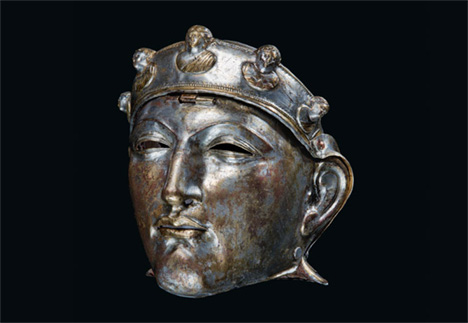Brexit and the Binding of Satan – Part 3

The feet of the great statue in Nebuchadnezzar’s dream cannot be interpreted as a prediction of the states of modern Europe, but the lessons from their failure can certainly be applied.

The feet of the great statue in Nebuchadnezzar’s dream cannot be interpreted as a prediction of the states of modern Europe, but the lessons from their failure can certainly be applied.
Part 1 here.
I’ve been meaning to write this post since I wrote Part 1 (over two years ago). A friend’s recent question concerning Kenneth Gentry’s lectures on the Revelation encouraged me to bite the bullet and bust a gut and get it done. The question is this: Is the Revelation to be interpreted in the light of Josephus’ Jewish War, or in the light of the Bible itself?
And Jesus, perceiving in himself that power had gone out from him, immediately turned about in the crowd and said, “Who touched my garments?” (Mark 5:30)
We aren’t told in Genesis 9 what Ham’s intention was when he “uncovered” his father, Noah. Peter Leithart and James Jordan both present some fascinating insights (which differ from each other), but perhaps there is a solution elsewhere in Genesis, which, combined with both these possibilities, offers something new.
This post has been slain and resurrected for inclusion in Praxeme: Journal of Systematic Typology.

Part 1 | Part 2 | Part 3 | Part 4 | Part 5
We have reached the sixth cycle of Numbers, which seems to include chapters 30-34. Seeing as it has been a while since we looked at Numbers, here’s the overview again, with this next cycle in red.
Overview of Numbers
Excerpt from James B. Jordan, Babylon and the Babel Project, Biblical Horizons Occasional Paper No. 39. Available from www.biblicalhorizons.com
“For I am jealous for you with godly jealousy. For I have betrothed you to one husband, that I may present you as a chaste virgin to Christ.” 2 Cor 11:2
In Eden, as priest to Eve, Adam’s role was to continually bring her to the Father. She was put “below” Adam in the hierarchy. As the first approach of the High Priest on the Day of Covering — with the blood of a bull — Adam would present himself, standing before God as Mediator (head):
F A T H E R > < S O N + B R I D E
Adam’s job was to bring Eve “between” as the fruit, the evidence, of Covenant relationship. By being faithful to the law, he would open and maintain a clean, safe, Holy Place — a firmament — a house for the bride. The second approach of the High Priest was to cover the body, the nation. In this, he presented the blood of the first goat as the faithful bride (goat hair, symbolising the Lord’s cloud of “bridal” glory, covered the Tabernacle). Like the glory between the Father and the Son in heaven, a glorious Eve was both the fruit of Adam’s obedience, and her future fruitfulness a gift from Father to Son:
F A T H E R > B R I D E < S O N
We see this imaged in the search for and presentation of godly Covenant brides in Genesis. Eliezar and Jacob seek brides for presentation to the Covenant fathers.
As I’ve mentioned here before, and in Totus Christus, the reference to the “man of sin” in Revelation is the sixth stanza of what is usually a seven stanza format. Only, in the case of this “Adam,” his seventh stanza is missing. [1] There is no Shekinah, no rest, no transfiguration, no bestowed glory. He crowned himself, so for him there would be no true crown.
“Blessed are the meek, For they shall inherit the Land.” (Matthew 5:5)
Some more thoughts related to Walking on Water. Please read Joshua 3 before proceeding.
If the New Jerusalem is the fulfilment of the “wall of water” at the Jordan crossing, the Lamb at the centre of the city is the Ark in the middle of the riverbed, surrounded by a human government. [1] If you know your James Jordan, the Ark of the Covenant was an image of the Light that shone on Day 1. The Lamb remains at the centre of the city, surrounded by the firstfruits saints, until the last saint is redeemed and Christ hands the kingdom to the Father.
 Great stuff from Peter Leithart’s blog:
Great stuff from Peter Leithart’s blog:
Michael Stead (The Intertextuality of Zechariah 1-8 (Library of Hebrew Bible/Old Testament Studies)) points to a number of intertexual connections between Ezekiel 1-11 and the vision of Zechariah 5:5-11. He concludes that the vision of Zechariah is an inversion of the Ezekiel’s vision of Yahweh’s departing glory: “Ezekiel 1-11 describes the departure of Yahweh from Jerusalem because of the idolatry (Ezek 8), iniquity (Ezek 4) and wickedness (Ezek 5) of his people, and his departure is attended by winged creatures riding on the wind. But, now that Yahweh is returning to dwell in Jerusalem, idolatry/iniquity/wickedness is being forced to depart, in a parody of Yahweh’s earlier departure.”